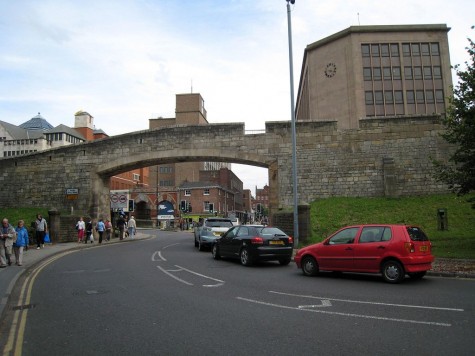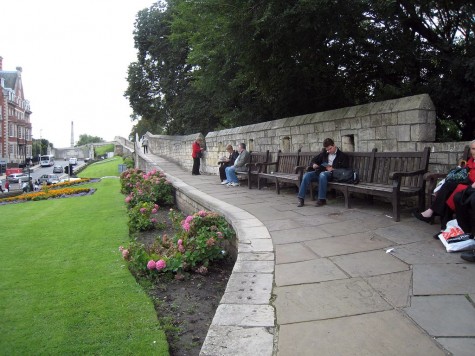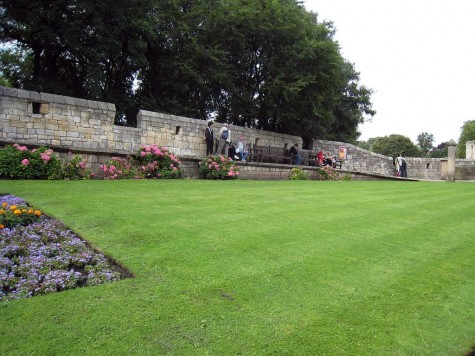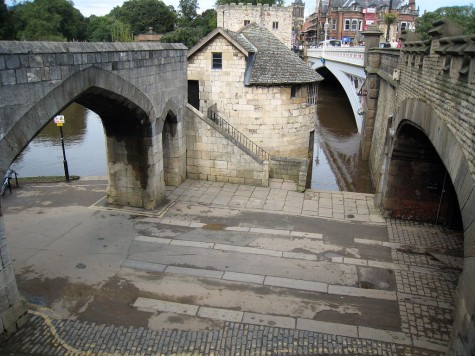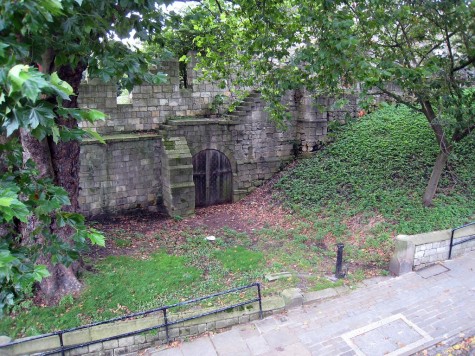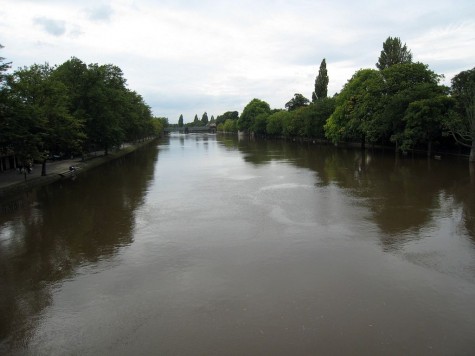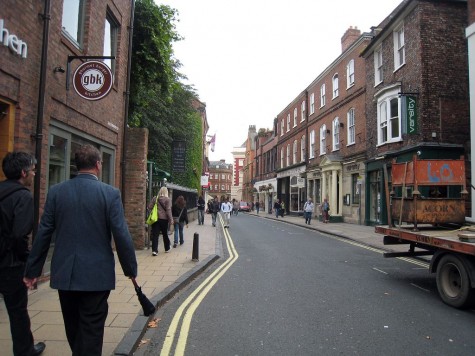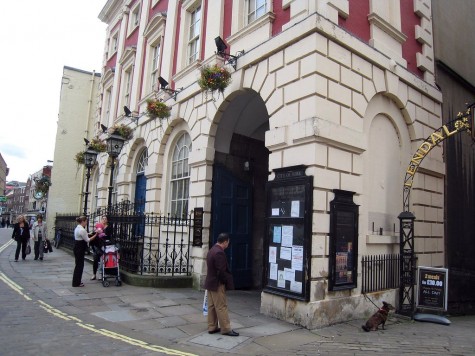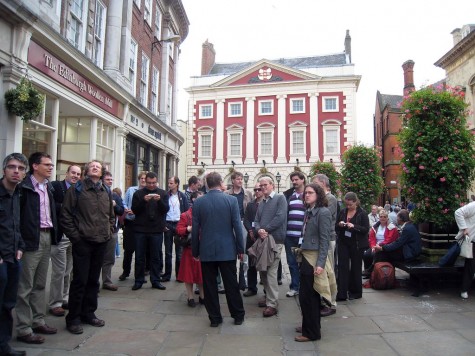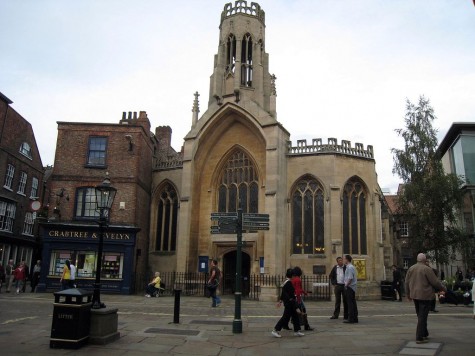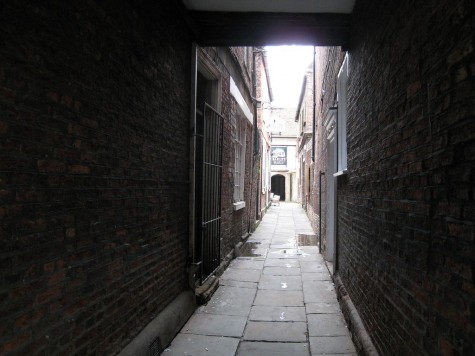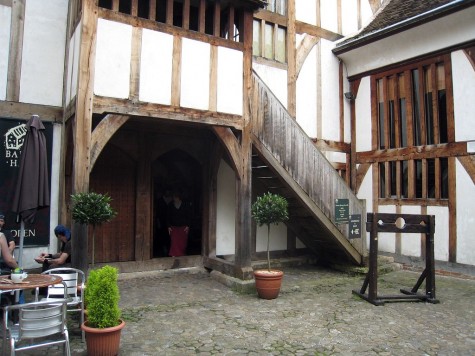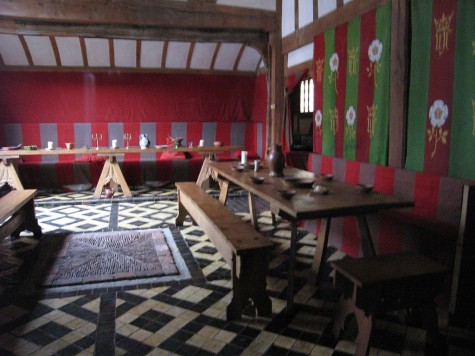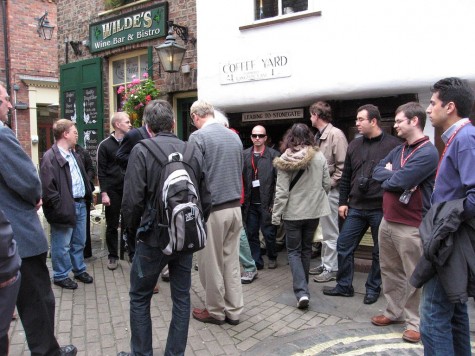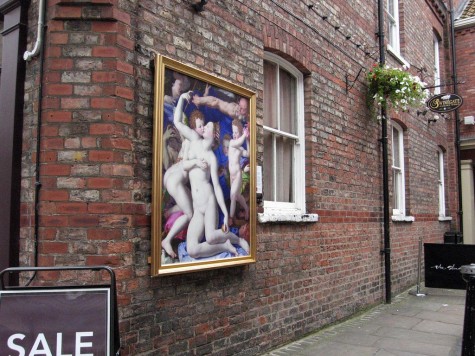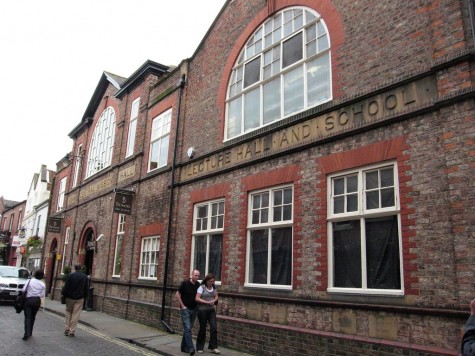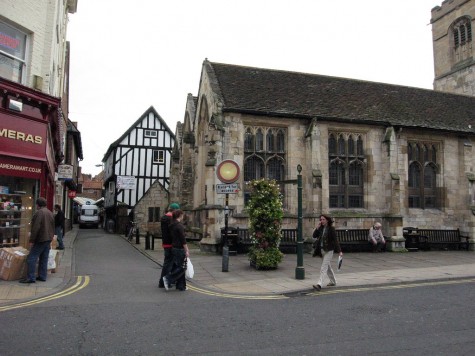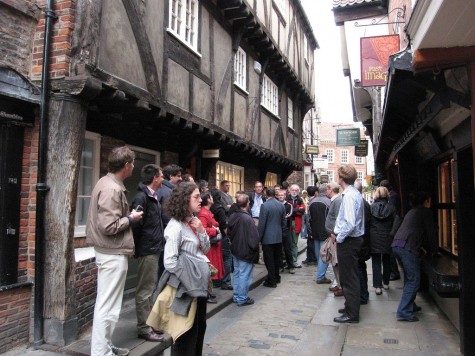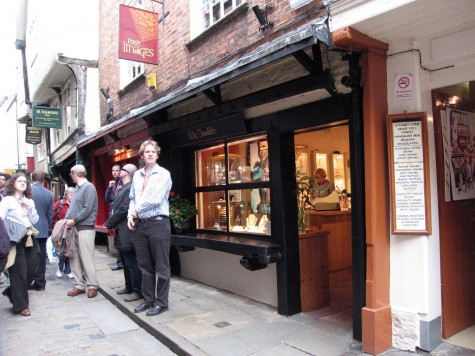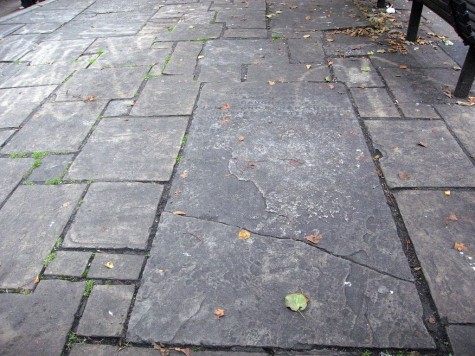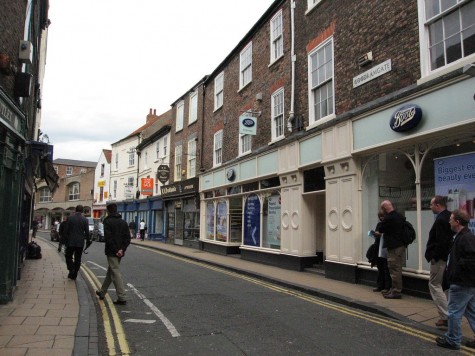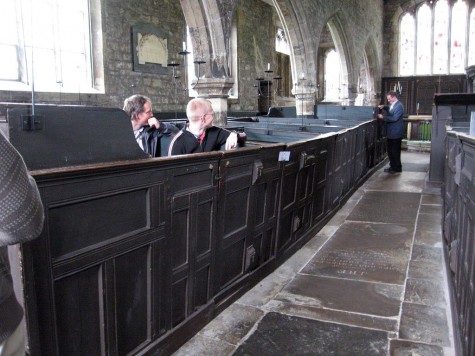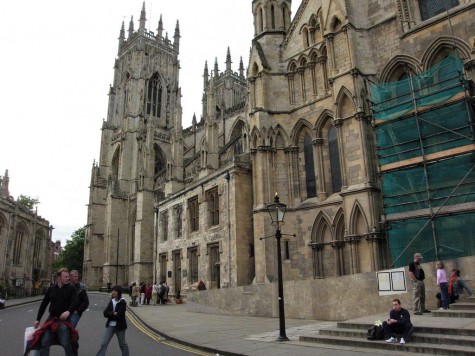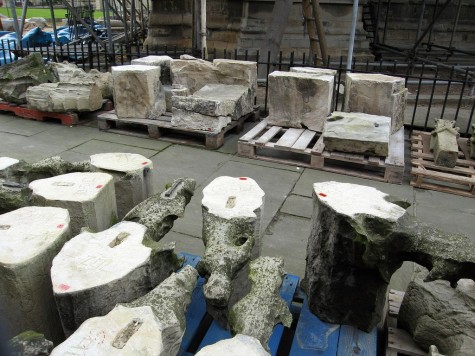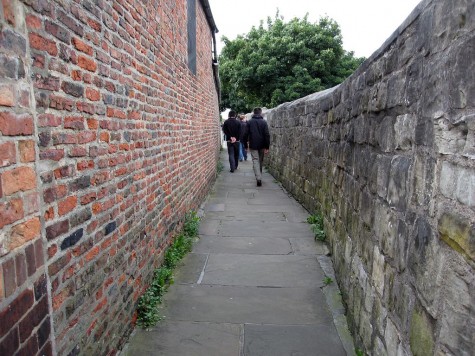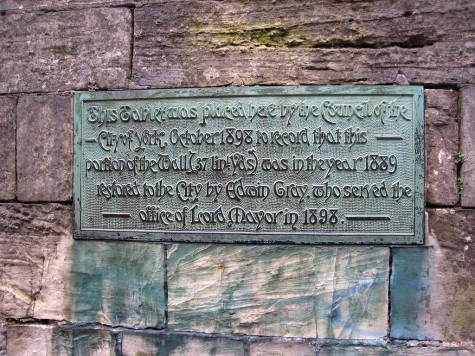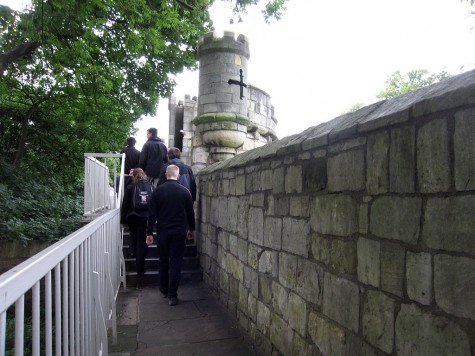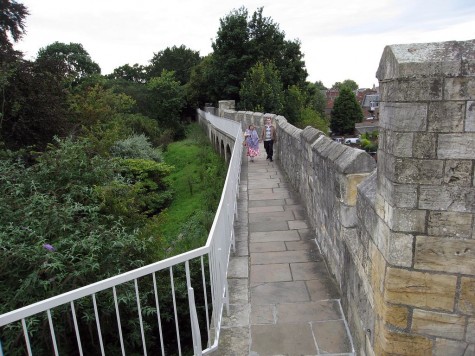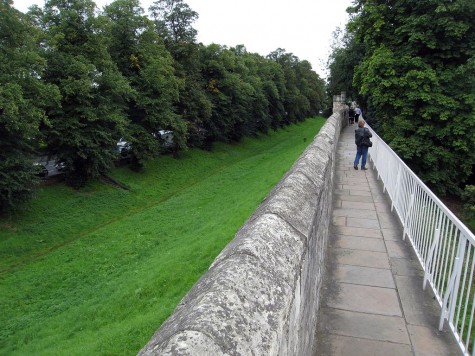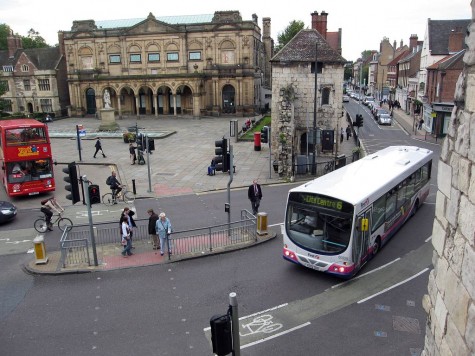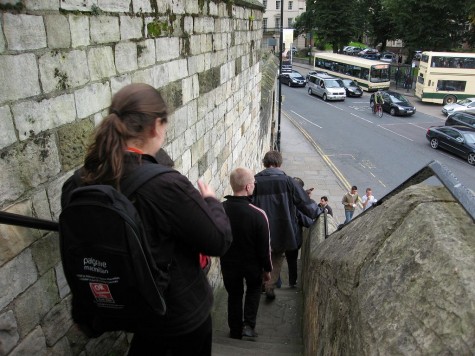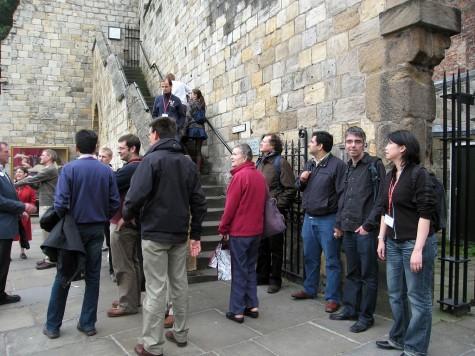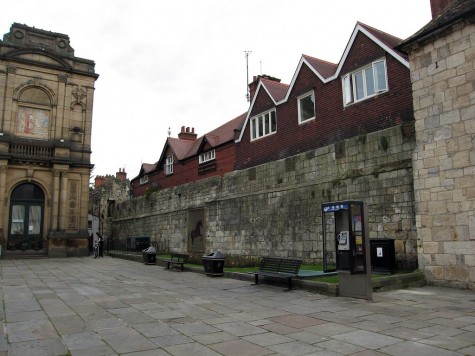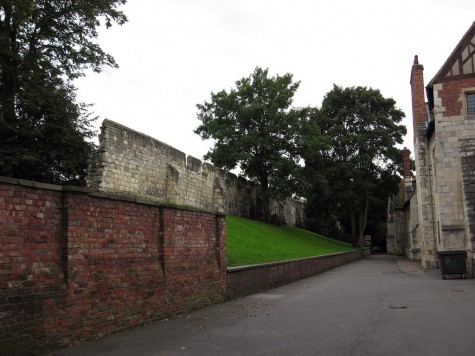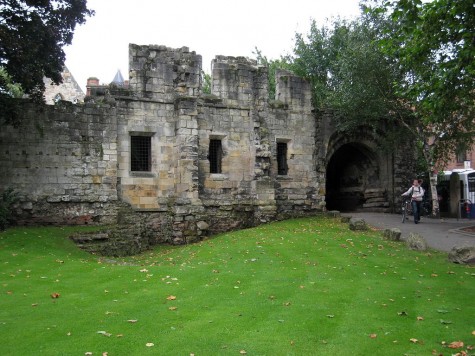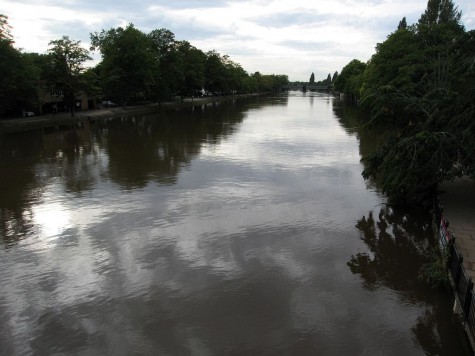The bus dropped us off near the Yorkshire Gardens, and we walked towards the town centre, along the inside of the wall.
We started our walking tour by the lawn by the wall.
Just before crossing the Lendal Bridge, we could look down onto the road beside the riverside.
The passing centuries inside the city walls have allowed the maturity of urban forestry.
The River Ouse flows through the middle of York.
Our walk continued down Lendal Lane.
The Guildhall is the official office of the City of York.
We stopped by the Mansion House at St. Helen’s Square for an historical briefing.
St. Helen’s Church is prominent at the square.
The tour continued from lower Stonegate …
… and on to upper Stonegate.
There’s small details on the buildings, such as this red “Printer’s Devil”.
Almost hidden amongst the buildings are small passageways like this one at Langdon Lane.
The lane opens up into Coffee Yard, and Barley Hall.
Barley Hall, dating back to the 1360s, houses exhibitions and can be rented for events. It was closed, but I got a snapshot of the interior through the window.
Our tour continued north through the passageway, to another street.
Public art has been posted at various places in York, including Grape Lane.
Our walk continued northbound up Swinegate.
The Central Mission Hall no longer has functions for religious purposes.
We continued past another church.
Since we were late in the afternoon, Newgate market was closing down.
Just off from the market, we entered The Shambles.
Turning right to head south, the second floors of the buildings on this narrow street overhang ground floor shops that historically would have housed butchers.
There are still a few traditional food stores, but the area now seems to cater to tourists.
After peeking in a few stores, we turned back north.
A few stores, like this high-end jewellery retailer, have been significantly renovated in the Shambles.
Around the corner was King’s Square. At our feet were some tombs that have not been well-maintained.
On the roof is one of the cat statuettes that homeowners in York have commissioned.
From King’s Square, we continued up Goodramgate.
The tour included a visit to the Holy Trinity Church on Goodramgate.
Beyond the narrow entry gate is a walled courtyard. Holy Trinity Church dates back to the 12th century.
In the 17th and 18th century, the pews were partitioned into small compartments that families would share on days of worship. Slipping in or out of a sermon would be unlikely, with latches on the doors.
The wealthy might get compartments a little farther from the pulpit, but the poor would sit close under the view of the minister.
Farther back in the church is the altar, under a stained glass window. There were some descriptions about the history and renovations planned for the church, displayed on easels.
Coming out of the shopping district, one of the lanes leads to York Minster.
York Minster is one of the largest cathedrals in Europe, and nearly impossible to photograph with the widest of lenses. Here’s the view west that includes the tower.
Outside the Minster is a bronze of Constantine I, who ruled Britannia under the Roman Empire from York in the first century.
As we walked around the east end of the Minster, we found stonework in preparation for installation in the renovation.
Some of the more complicated pieces had been deconstructed and numbered for later reassembly.
We continued on Goodramgate towads Monk Bar. A “bar” is a gatehouse.
The gate reveals the thickness of the walls.
Just beside the wall is an entry to access the walks on the top of the walls.
The stairs aren’t intended for two-way traffic.
We started the walk from Monk Bar, towards the northwest.
The height of the walls was taller than me. With the thick walls, I couldn’t see very well even at the ports.
As we continued walking northwest, the city buildings cleared to parkland.
Set into the stone is a marker of the “Gateway to Roman Fortress”.
We might have assumed that restoration of the wall happened in the 20th century, but this plaque was set in 1898, after almost a decade of work.
Looking south from the wall, beyond some houses, the towers of the Minster arise.
At a slight jog of the wall, I could see the ditch on the north side, covered by a well-kept lawn.
Most of the walk is flat. We climbed a few steps at the northwest corner of the wall.
The sentry post was up a few more steps.
From this high point, the wall turned southwest.
On this segment, the grassy ditch was inside the wall, with trees on the outside.
This took us around to a slightly different view of the Minster.
At Bootham Bar, we ended our wall walk, taking the stairs down.
The landing on the Bootham Bar stairs gives a good view of the King’s Manor, now used by the University of York.
There’s a lot of traffic outside the wall at Bootham Bar.
Our tour group paused for a few moments for everyone to catch up.
King’s Manor dates back to the 16th century.
St Mary’s House, constructed in the early 20th century, provides spiritual services not only university students, but also the community at large.
We walked south on Marygate, outside the city wall.
Marygate leads to the Yorkshire Museum and Gardens.
I continued past the path to a small entry through the wall near the abbey.
At the gardens, the Multangular Tower is one of the best preserved parts of the wall.
St. Mary’s Abbey dates back to the 11th century, and has been in ruins since the 16th century with Henry VIII.
We finished the tour near the place where we had started. We didn’t have time to explore the museum or gardens any more.
We finished the tour crossing back over the River Ouse.
When I was in high school, British history was a major focus for Grade 9. In York, history lives on into the 21st century.

